|
|
Newsletter November 2018
|
|
 |
|
Laser and optical
systems, whether used in an academic laboratory or in an industrial
environment, are very susceptible to vibrations from the environment. These
instruments almost always need vibration isolation. Traditionally, large air
tables have been the systems prefered for optical systems. This is no longer
the case. Minus K isolators provide 10-100 times the performance of air tables,
depending on the vibration frequency. They don't need air or electricity and
are compact and easy to move around. Some users need the array of threaded
holes that breadboards provide. In that case it is quite easy to put a
breadboard on top of one of our antivibration isolators. It is also common to
put a larger breadboard across two or more of our isolators.
Laser based
interferometers are exquisitely sensitive devices that are capable of resolving
nanometer scale motions/features. They often have very long mechanical paths
which makes them even more sensitive to vibrations. The sophisticated modern
ellipsometry techniques that allow this high performance rely on low noise to
be able to detect fringe movement. Properly isolating an interferometer will
allow it to provide the highest possible resolution.
Optical profilers
have similar sensitivity to vibrations. Keeping external vibrations from the
typically long optical path yields improved sensitivity and more reliable
measurements. It is no longer necessary to do the most sensitive measurements
at all hours of the night.
Optical component systems are often quite
complex. The long optical paths can lead to angular magnification of
vibrations. Typically used optical air tables can make the problems worse since
they have a resonant frequency that often matches that of floor vibrations. Our
1/2 Hz isolators provide isolation in these environments when air tables simply
cannot.
Full page with added images...
Related article regarding laser
interferometry isolation...
|
|
Cryostats often
contain very sensitive instrumentation. They come in many different shapes,
sizes and weights. Whether you are doing low temperature AFM, NMR or something
else, we have several options available.
If your lab is on an upper
floor of a building, air isolators may not be able to provide you enough
isolation to get rid of building modes. In the worst case, the building might
have a low resonant frequency close to that of the air tables. If this is the
case, you can have amplification of the buildings vibrations. Obviously, this
is not ideal. Our 1/2 Hz isolators will isolate at these low frequencies and
will give your cryostat the best possible vibration isolation.
Our
isolators can be mounted on a set of pedestals as shown in the image to
optimize our interface. Of course, your cryostat may not have mounting brackets
such as these shown. We can work with you to determine the best way to
incorporate our isolators into your system. Minus K can design bracketry for
you, or work with you and advise on the best way to build and incorporate
them.
Full article...
Related article featuring Dewar
cryostat...
|
|
Nanoindentation & Micro Hardness
Testing
Vibration Isolation
Micro Hardness
Testers and Nano Indenters can be quite sensitive to vibrations that increase
the noise floor of critical measurements. The method of actually doing the
measurements varies by manufacturer, but the fundamental mechanical path is
similar. In all cases, the instruments need to be as still as possible to get
the best performance. Some of the instruments are most sensitive to the
vertical axes while others are more sensitive to the horizontal.
Minus K
Technology isolators are unique in that they can deliver 0.5 Hz performance
both vertically and horizontally. Most other isolators delivery their best
performance vertically (which is typically the most important axis to isolate)
and lower performance horizontally. While this is ok for some applications,
there are those, such as some micro hardness testers that are most sensitive
horizontally. For those instruments, our isolators offer by far the best
isolation available.
If you have no choice but to place on of these
instruments on the upper floor of a building, our isolators can make it
possible to get the best performance possible. We have provided isolation
solutions for many happy customers facing this very problem.
Related page...
|
|
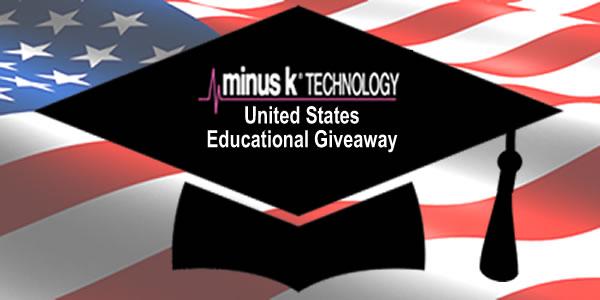
Announcing the 2019 Minus K
Technology Educational Giveaway
for U.S. Colleges and
Universities
Minus K Technology,
Inc. is giving away $20,000* worth of patented vibration isolators to colleges
within the United States.
Your college could receive one of our
superior performing negative-stiffness low-frequency vibration isolators, which
use no air or electricity and are currently being used for biology,
neuroscience, chemistry, crystal growing, physics, audio reproduction and many
other fields.
If your school (or a favorite school you may want to
notify), has an Atomic Force Microscope (AFM), Electron Microscope,
Interferometer, Laser Optical System, Micro Hardness Tester, or any other
special equipment that would be assisted by our vibration isolation, visit
this page for more
details. If your school is one of the top applicants, we'll send you one of
these free vibration
isolators to assist you with your research.
Past Winners:
2018, 2017, 2016, 2015, 2014
*See more details, terms and
conditions...
|
Negative-Stiffness Vibration Isolation at the South
Pole
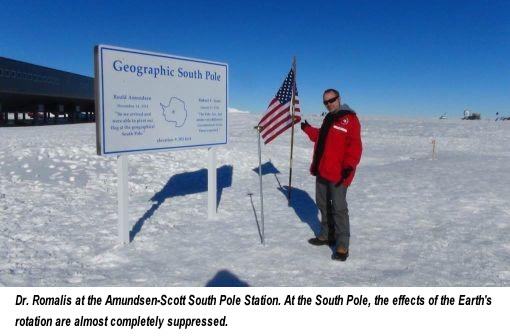
Developed and patented by Minus K Technology,
Negative-Stiffness isolators provide a unique capability, employing a
completely mechanical concept in low-frequency vibration isolation, with no air
or electricity required.
Full article &
images...
NEED FOR VIBRATION ISOLATION: The
Romalis Group's atomic spin co-magnetometer, in use both at Princeton
University in New Jersey and at its South Pole lab, is among the most
sensitive devices for testing Lorentz symmetry. Consequently, precision
vibration
isolation is required to isolate vibrations from its
sensitive components not only for the co-magnetometer, but for the systems
associated lasers and optical alignments.
Vibrations in the range of few
hertz (Hz) to a few 10s of Hz will influence the testing. These internal and
external influences primarily cause lower frequency vibrations which are
transmitted through the structure, creating strong disturbances in sensitive
equipment.
Vibration within this
range can be caused by a multitude of factors. Every structure is transmitting
noise. Within the building itself, the heating and ventilation system, fans,
pumps and elevators are just some of the mechanical devices that create
vibration. Depending on how far away the equipment is from these vibration
sources, and where in the structure the equipment is located, whether on the
third floor or in the basement, for example, will determine how strongly the
instrumentation will be influenced.
External to the building, the
testing can be influenced by vibrations from vehicle movement, nearby
construction, noise from aircraft, and even wind and other weather conditions
can cause movement of the structure.
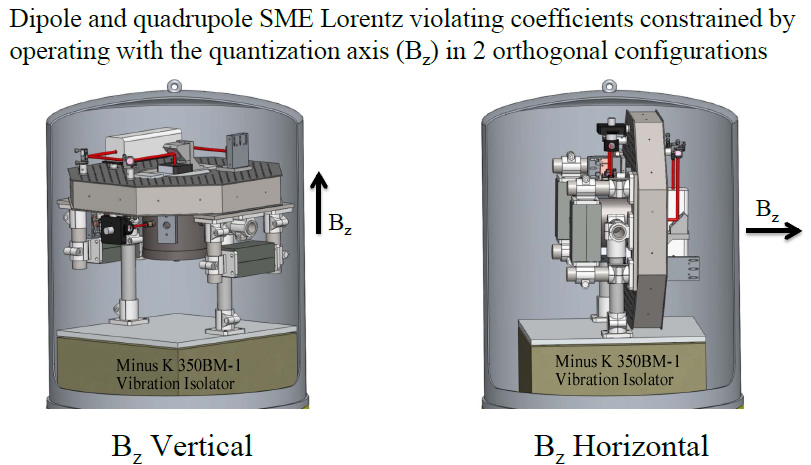 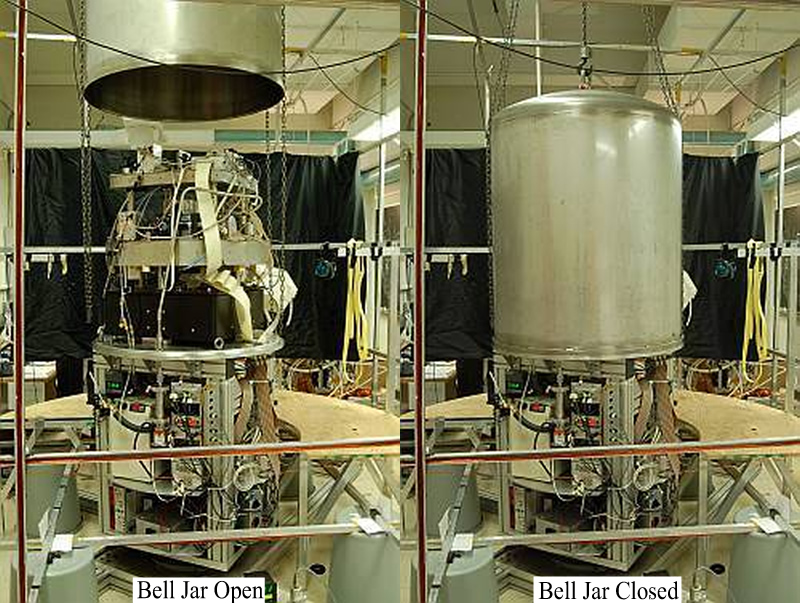
SOUTH POLE
FLEXIBILITY: Negative-Stiffness isolators do not require electricity or
compressed air. There are no motors, pumps or chambers, and no maintenance
because there is nothing to wear out. They operate purely in a passive
mechanical mode.
If equipment can be isolated from vibrations without
having to deal with compressed air or electricity, then it makes for a system
that is simpler to transport, and easier to set-up and maintain. Such was the
case with the Romalis Groups Lorentz symmetry testing at the Amundsen-Scott
Station, South Pole.
The Negative-Stiffness isolator provided the
flexibility to be easily transported with our alkali metal-noble gas
co-magnetometer from our Princeton lab in New Jersey to the South Pole, added
Romalis. We did not have to make adjustments for electrical power and pumps to
support the vibration isolation.
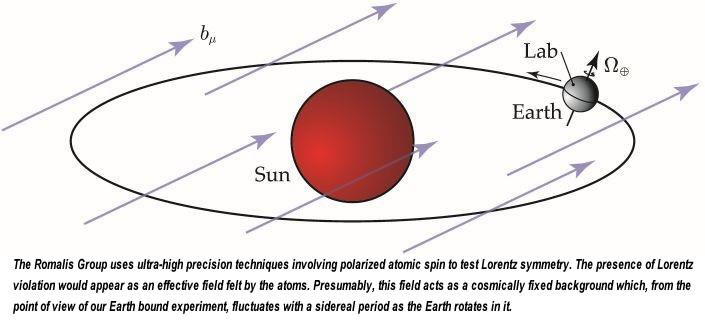
Full article &
images... Applications... Products...
|
|
Ultra-Low Frequency Vibration Isolation
Stabilizes
Scanning Tunneling Microscopy

The tunable
microwave-frequency alternating current scanning tunneling microscope (ACSTM)
can record local spectra and local chemical information on insulator surfaces,
much like the conventional STM can do for metals and semiconductors.
Spectroscopy in the microwave frequency range enables previously unattainable
measurements on conducting substrates, such as the rotational spectroscopy of a
single adsorbed molecule.
The technology was developed in the early
1990s by Professor Paul Weiss, the nano-pioneering director of the Weiss Group,
a nanotechnology research unit of UCLAs California NanoSystems Institute. The
ACSTMs single-molecule measurement techniques have illuminated unprecedented
details of chemical behavior, including observations of the motion of a single
molecule on a surface, and even the vibration of a single bond within a
molecule. Such measurements are critical to understanding entities ranging from
single atoms to the most complex protein assemblies.

We use molecular
design, tailored syntheses, intermolecular interactions and selective chemistry
to direct molecules into desired positions to create nanostructures, to connect
functional molecules to the outside world, and to serve as test structures for
measuring single or bundled molecules, says David McMillan, lead technician at
the Weiss Group. The ACSTM enables interactions within and between molecules to
be designed, directed, measured, understood, and exploited.
The group
examines how these interactions influence chemistry, dynamics, structure,
electronic function, and other properties. Such interactions can be used to
form precise molecular assemblies nanostructures and patterns, and to control
and stabilize function. By understanding interactions, function and dynamics at
the smallest possible scales, the group hopes to improve synthetic systems at
all scales.
Full
article...
|
Vibration News &
Articles

Previous
Features:
Ultra-Low Frequency Vibration
Isolation Stabilizes Scanning Tunneling Microscopy
Neuronal Research into Animal
Learning, Memory Neuronal Research,
Vibration Isolation Problem &
Solution
Sunken Treasure Surrounding The
Coldest Cubic Meter In The Universe
Supported by Minus K Vibration
Isolators
Lithium Batteries: Superionic Solid
Electrolytes for Next-Generation
Spacecraft Vibration Isolation On the
Ground
Behavior of a Single Molecule-UCLA's
California NanoSystems Institute
Cleanroom Precision Vibration
Isolation
Negative-stiffness vibration
isolation is utilized to provide ultra-stability for multi-disciplined,
nano-level research at UCLA's California NanoSystems
Institute.
NASA/JWST Update: Custom James Webb
Space Telescope Vibration Isolators Working Well
Audiophile Interests: The Doehmann
Helix 1 Turntable
2017 Winners | Minus K Technology
Educational Giveaway to U.S. Colleges and Universities
|
|

 |
|
|
